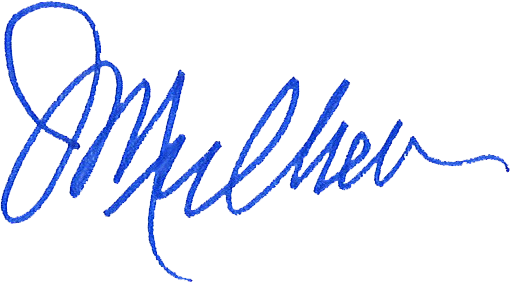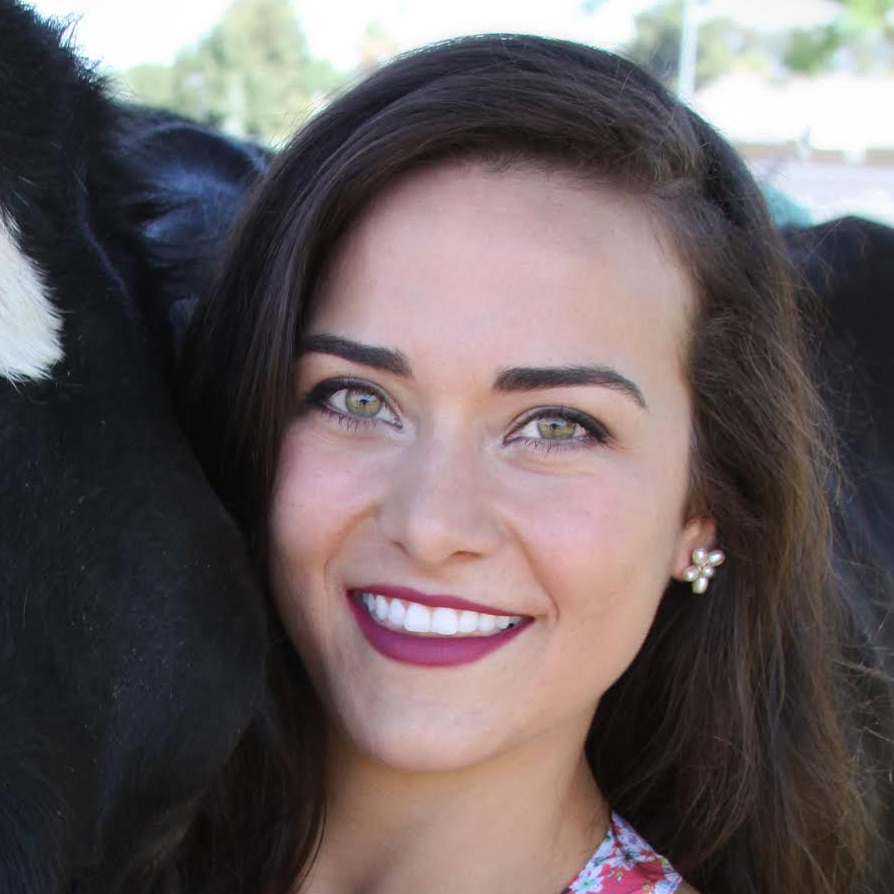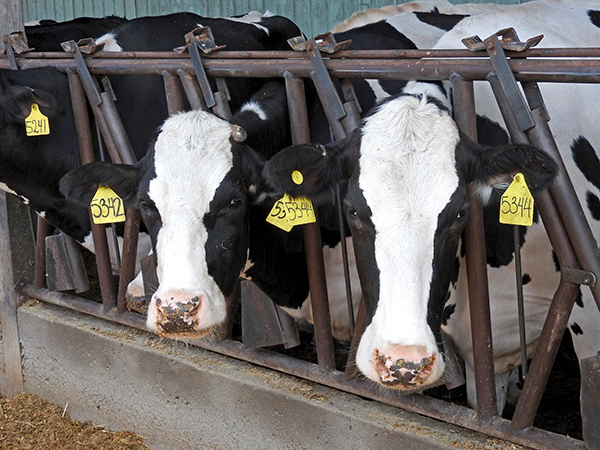Heeding Mark Twain’s advice that foreign travel is fatal to narrow-minded thinking, six of NMPF’s board officers joined me on a week-long trip to Europe last month. Our goal was to better understand how the U.S. dairy sector can best broaden its focus on global markets, as many major European dairy companies have successfully done. What we found in conversations with key players in Denmark, France and Germany is that America’s dairy industry has a significant opportunity to grow our share of the world market, and the time for action is now.
Of course, the imperative of addressing this challenge is staring us in the face. U.S. milk production continues to outpace growth in domestic consumption, and if we don’t develop new markets overseas, we will suffer the consequences of lower farm milk prices and the resultant pressure to survive.
Meanwhile, while the U.S. dairy industry has kept its predominant focus on the large domestic dairy market, the collaborative force of the 28-nation European Union (EU) has worked to become the dominant player in global dairy trade. The EU has a diverse array of dairy farming styles, and collectively its farmers also produce more milk than can be marketed internally, creating the need for a strong export capability. NMPF’s leaders sought to deepen our understanding of how that reality is addressed by EU dairy cooperatives and processors, and how it affects the key challenges and opportunities they are seeing in the export market.
Perhaps the most interesting reaction – one we heard repeated across meetings in several nations – is that Europe does not view the United States as a competitive threat (even though we’re the world’s third-largest exporter behind the EU and New Zealand). The view is that the U.S. dairy industry’s focus on our domestic market will keep us from competing more aggressively in foreign markets. While that view is not without some justification, I believe it underestimates the growing understanding here that increasing U.S. presence in global dairy markets is our new manifest destiny.
Our task will be challenging, but we can and will meet it. The EU dairy industry is organized, experienced, committed and well-positioned to grow their exports. It was clear our European cooperative counterparts are more heavily invested in the export market than our U.S. industry. Most exported at least 10 percent of their total sales with a variety of products, and all of them are seeking to grow that volume through increased investment of assets in new products and international marketing activities like sales forces, offices and subsidiaries.
All three dairy cooperatives we met – Arla in Denmark, DMK in Germany and Sodiaal in France (as well as proprietary processor Lactalis) – indicated they are focused on expanding their export sales. Sodiaal is creating products for consumers in China, Southeast Asia and West Africa. Interestingly, both Arla and Sodiaal indicated they want to not only export additional products to emerging markets, but also build processing and distribution facilities in new markets and work with local farmers. Meanwhile, DMK is focusing its market expansion on the Middle East and East Africa.
The European drive to export has been made even more pressing by the twin challenges of the end of production quotas two years ago and the simultaneous loss of the Russian market due to economic sanctions that are still in place. Previously, Germany had a large market share in Russia, but now is focused on increasing its sales to China – in direct competition with New Zealand. The income of the EU’s producers is supplemented by payments generated by its Common Agricultural Policy, and that has softened the blow of the recent two-year downturn in global prices. The overall income on the vast majority of EU dairy farms is increased by roughly 30 percent through various government payments.
We also heard from these cooperatives, as well as the national dairy associations we met, that marketplace pressures familiar to farmers in the United States have long been creating apprehensions about how milk is produced in Europe. The consolidation of retailers in Europe, each battling for market share, has generated a new emphasis on issues including animal care, traceability, sustainability and opposition to genetically modified ingredients.
In particular, the pressure to market “GMO-free” dairy products in Europe has been largely driven by retailers who believe they are responding to consumer desires. However, the information we gathered during the trip suggested that consumers care very little about GMO absence claims imposed by retailers on processors, and therefore on producers. In fact, individuals we met with indicated that, like here, the issue is largely driven by activists groups. As in the United States, the GMO-free approach in the EU appears to be a marketer-driven strategy to gain space and market share over competitors.
We came away from this trip recognizing that these EU dairy companies are committed and well-positioned to grow their exports. It’s ample evidence of why the United States needs to respond in kind, now. Our leadership had many discussions about how to collaborate toward the common goal of increasing our investment — and presence — in the world market.
NMPF’s Cooperatives Working Together (CWT) program will play a critical role in these on-going discussions. We are currently engaged in a strategic planning effort to examine CWT’s future role, an effort that I expect will lead to a sharpened focus on how best to grow our dairy export markets. In addition to NMPF’s efforts, U.S. Dairy Export Council President and CEO Tom Vilsack is planning to expand the percentage of our milk production that is sold overseas.
Now is the time for action. Working together, we can become a more competitive force in the world market. Our European friends don’t think we have it in us. Sounds like a great challenge to me.


 WASHINGTON, D.C. – Congress must revise the dairy safety net program established in the 2014 Farm Bill to provide farmers with effective risk management protection that will increase participation in the program, according to Ken Nobis, president of the Michigan Milk Producers Association (MMPA) and first vice-chair of the National Milk Producers Federation (NMPF), who spoke at a 2018 Farm Bill hearing today.
WASHINGTON, D.C. – Congress must revise the dairy safety net program established in the 2014 Farm Bill to provide farmers with effective risk management protection that will increase participation in the program, according to Ken Nobis, president of the Michigan Milk Producers Association (MMPA) and first vice-chair of the National Milk Producers Federation (NMPF), who spoke at a 2018 Farm Bill hearing today. “I guarantee, if Congress alters the MPP so that it more accurately reflects the actual costs of production for businesses like mine, participation in the program will increase,” he told Chairman Pat Roberts (R-KS) and Ranking Member Debbie Stabenow (D-MI) (both left).
“I guarantee, if Congress alters the MPP so that it more accurately reflects the actual costs of production for businesses like mine, participation in the program will increase,” he told Chairman Pat Roberts (R-KS) and Ranking Member Debbie Stabenow (D-MI) (both left). (Washington, D.C.) – The CEO of a major farmer-owned dairy cooperative in Washington state told a congressional panel today that the North American Free Trade Agreement (NAFTA) has created jobs and increased sales for his company and the entire U.S. dairy sector, and that a renegotiated treaty must maintain market access to Mexico while also fixing trade challenges with Canada.
(Washington, D.C.) – The CEO of a major farmer-owned dairy cooperative in Washington state told a congressional panel today that the North American Free Trade Agreement (NAFTA) has created jobs and increased sales for his company and the entire U.S. dairy sector, and that a renegotiated treaty must maintain market access to Mexico while also fixing trade challenges with Canada.
 The second National Dairy FARM Program Evaluator Conference will be held in Indianapolis, Ind., on July 18-20, 2017. More than 400 trained FARM Animal Care evaluators will have the chance to network and discuss relevant topics in animal care, environmental stewardship and proper antibiotic use.
The second National Dairy FARM Program Evaluator Conference will be held in Indianapolis, Ind., on July 18-20, 2017. More than 400 trained FARM Animal Care evaluators will have the chance to network and discuss relevant topics in animal care, environmental stewardship and proper antibiotic use.
 At NMPF’s June board meeting, the NMPF Scholarship Committee selected two graduate students to receive scholarships as part of the 2017 NMPF National Dairy Leadership Scholarship Program. These students are conducting research in areas that will benefit dairy cooperatives and producers.
At NMPF’s June board meeting, the NMPF Scholarship Committee selected two graduate students to receive scholarships as part of the 2017 NMPF National Dairy Leadership Scholarship Program. These students are conducting research in areas that will benefit dairy cooperatives and producers. On June 19, NMPF submitted comments to the U.S. Food and Drug Administration (FDA) regarding the regulation of animals that result from gene-editing techniques. Gene-editing has potential for the U.S. dairy in helping to address animal welfare, antibiotics and sustainability issues.
On June 19, NMPF submitted comments to the U.S. Food and Drug Administration (FDA) regarding the regulation of animals that result from gene-editing techniques. Gene-editing has potential for the U.S. dairy in helping to address animal welfare, antibiotics and sustainability issues. National Milk congratulated the Michigan Milk Producers Association (MMPA) after the member cooperative won honorable mention at the 2017 U.S. Dairy Sustainability Awards in late June for their work supporting food-insecure families after the Flint water crisis.
National Milk congratulated the Michigan Milk Producers Association (MMPA) after the member cooperative won honorable mention at the 2017 U.S. Dairy Sustainability Awards in late June for their work supporting food-insecure families after the Flint water crisis.



